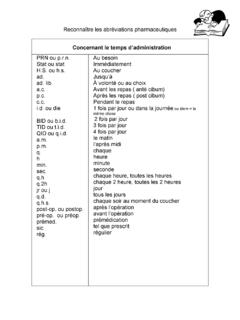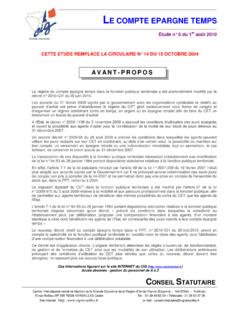Transcription of Advertising Age SECTION: LENGTH: HEADLINE: BYLINE
1 Copyright 1990 Crain Communications, Inc.; Advertising Age October 1, 1990 SECTION: FORUM; Pg. 26 LENGTH: 552 words HEADLINE: New marketing litany; Four P's passe; C-words take over BYLINE : By Bob Lauterborn; Mr. Lauterborn, former director of marketing communications and corporate Advertising at International Paper Co., is the James L. Knight Professor of Advertising at the University of North Carolina's School of Journalism, Chapel Hill BODY: It's time to retire McCarthy's famous Four P's, the Rosetta Stone of marketing education for 20 years. "The trouble with our newly minted MBAs," a package-goods marketing executive said recently, "is that they're wonderfully well-prepared for a world which no longer exists.
2 " When Jerry McCarthy and Phil Kotler proposed their alliterative litany -- Product, Price, Place and Promotion -- the marketing worldwas very different. Roaring out of World War II with a cranked-up production system ready to feed a lust for better living, American business linked management science to the art of mass marketing and rocketed to the moon. In the days of "Father Knows Best," it all seemed so simple. The advertiser developed a product, priced it to make a profit, placed it on the retail shelf and promoted it to a pliant, even eager consumer. Mass media simultaneously taught consumptive culture and provided advertisers with efficient access to an audience which would behave, Dr.
3 Dichter assured us, perfectly predictably, given the proper stimulation. That was then. This is now. Desperately, some marketers still try to make the formula work. They strew 12,000 new products across the shelves in a single year. Eight percent are stillborn. Retailers declare their independence. Consumers don't listen, can't be found, talk back for God's sake. What's going on here? It's time for a new formula: Lauterborn's Four C's. Forget product. Study Consumer wants and needs. You can't sell whatever you can make any more. You can only sell what someone specifically wants to buy.
4 The feeding frenzy is over; the fish are out of school. Now you need to lure 'em one by one, with something each particularly wants. Forget price. Understand the consumer's cost to satisfy that want or need. Price is almost irrelevant; dollars are only one part of cost. What you're selling against if you're selling hamburgers is not just another burger for a few cents more or less. It's the cost of time to drive to your place, the cost of conscience to eat meat at all, versus perhaps the cost of guilt for not treating the kids. Value is no longer the biggest burger for the cheapest price; it's a complex equation with as many different correct solutions as there are subsets of customers.
5 Forget place. Think convenience to buy. People don't have to go anyplace any more, in this era of catalogs, credit cards and phones in every room. On the other hand, when they do decide to go somewhere, it's no longer only to Kroger's. What's a poor marketer to do? Think beyond those nice, neat distribution channels you've set up over the years. Know how each subsegment of the market prefers to buy, and be ubiquitous. Forget promotion. The word iscommunication. All good Advertising creates a dialogue. Promotion is us -- out, manipulative, 1960s. Communication is from the buyer -- in, cooperative, 1990s.
6 That contrast is in the fact the fundamental difference between the Four P's, which served so well for so long, and the Four C's, which may be the formula for success as we leave the second millenium. Product, price, place and promotion are passe. Consumer wants and needs, cost to satisfy, convenience to buy and communication or the catechism for our times.







